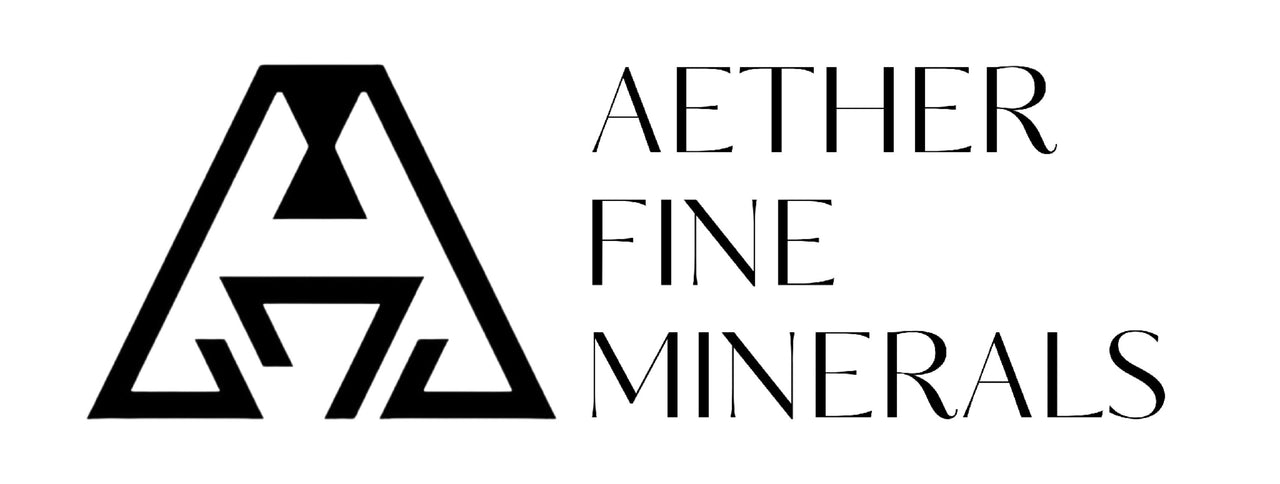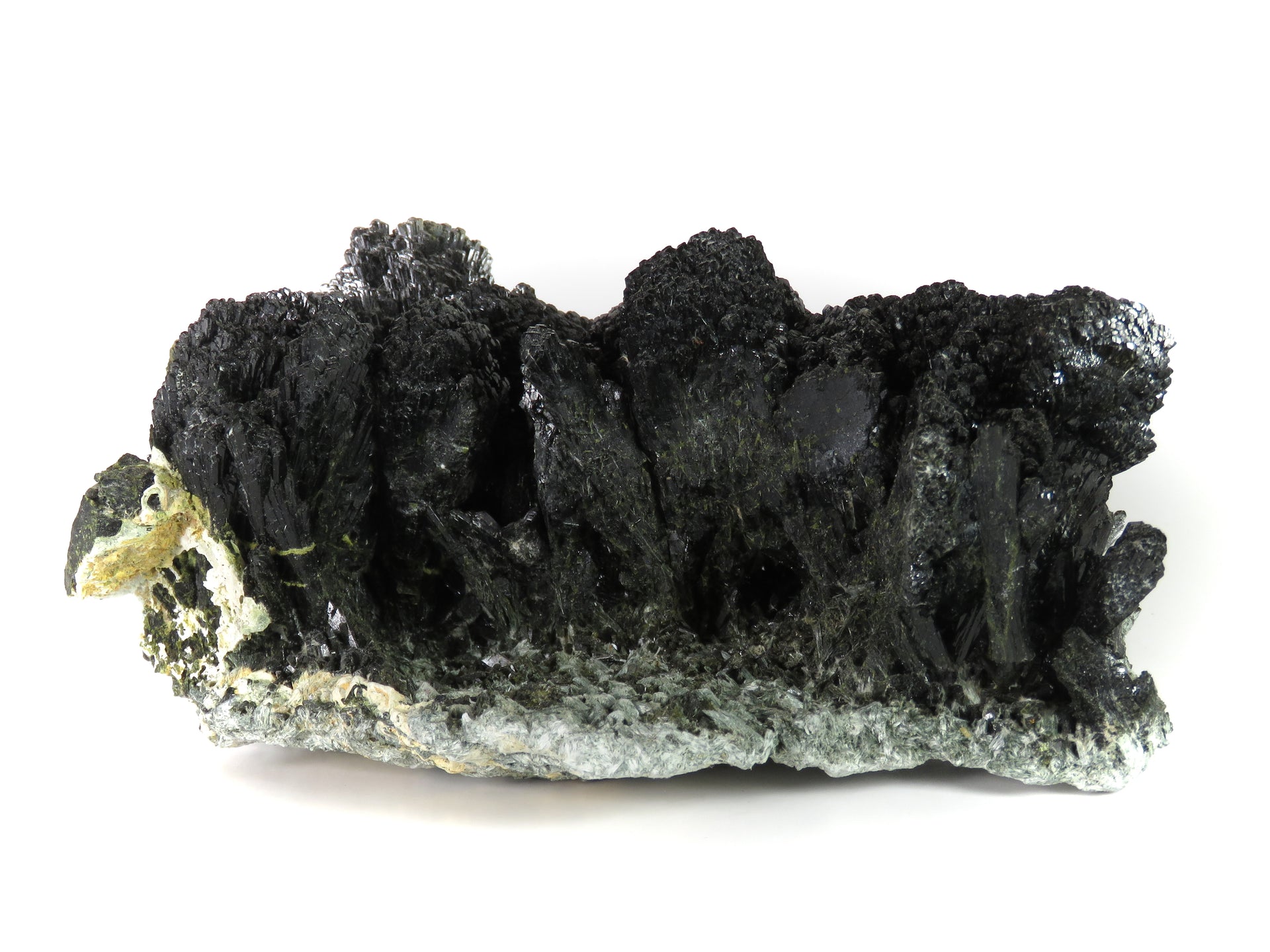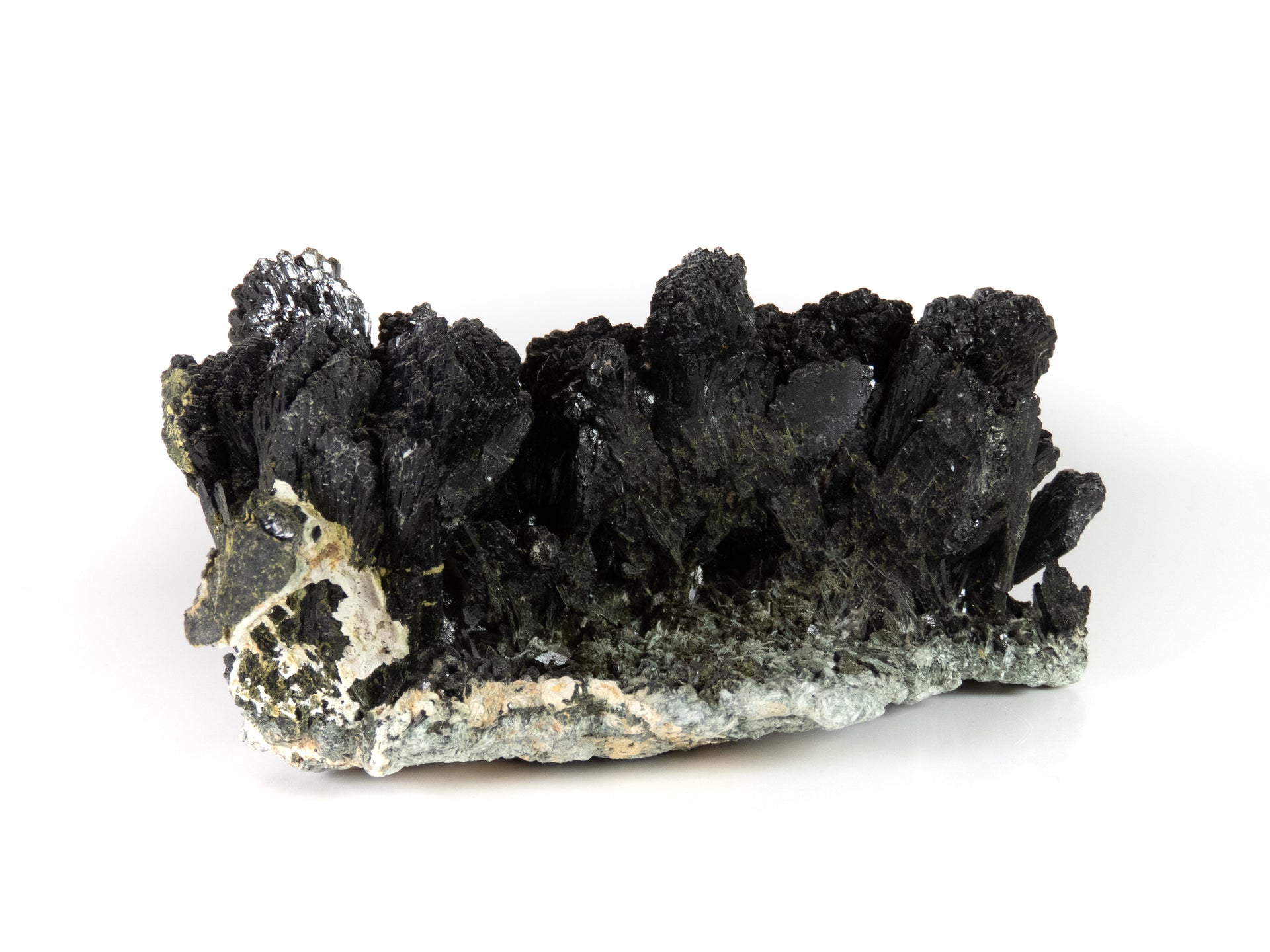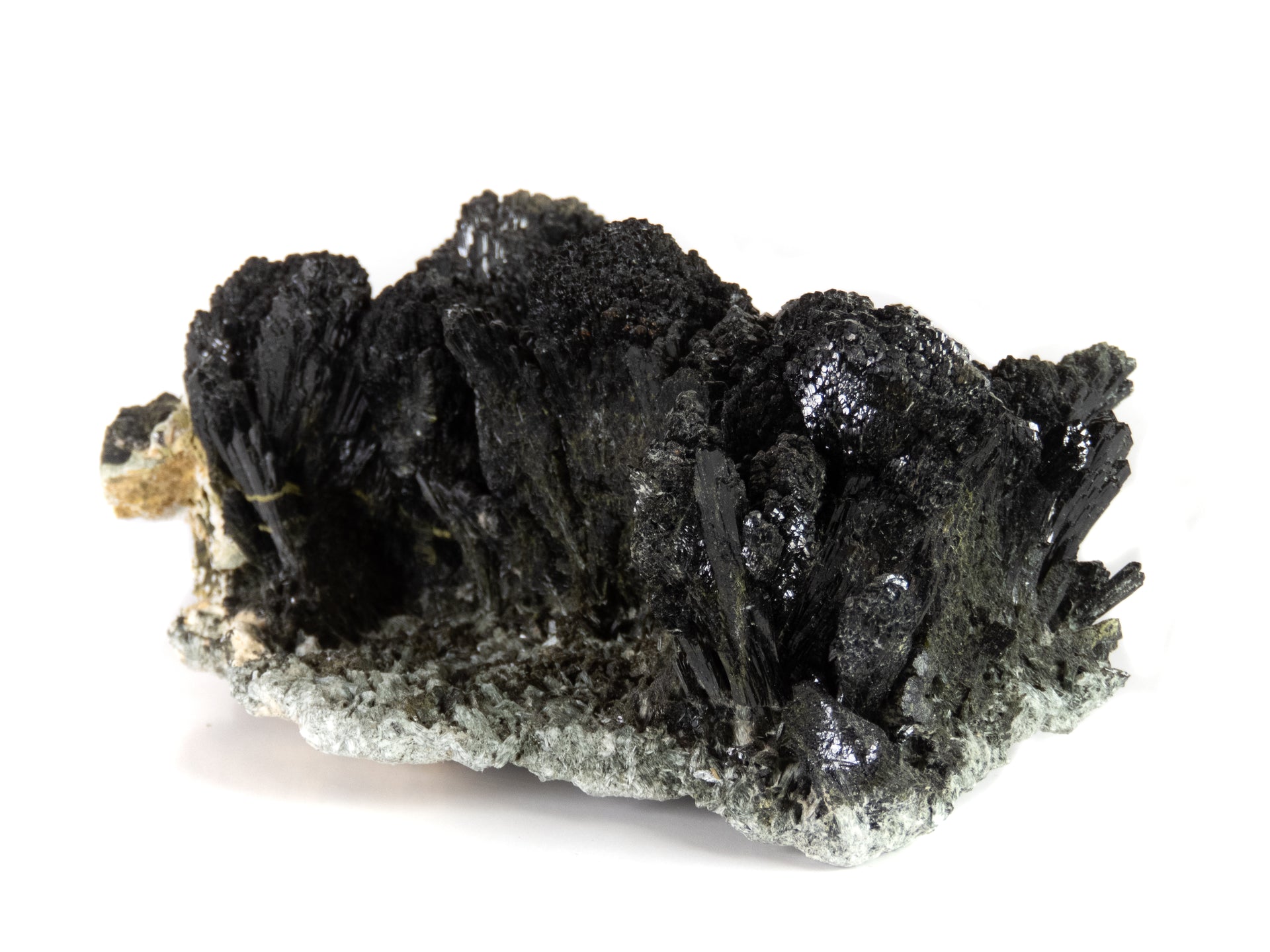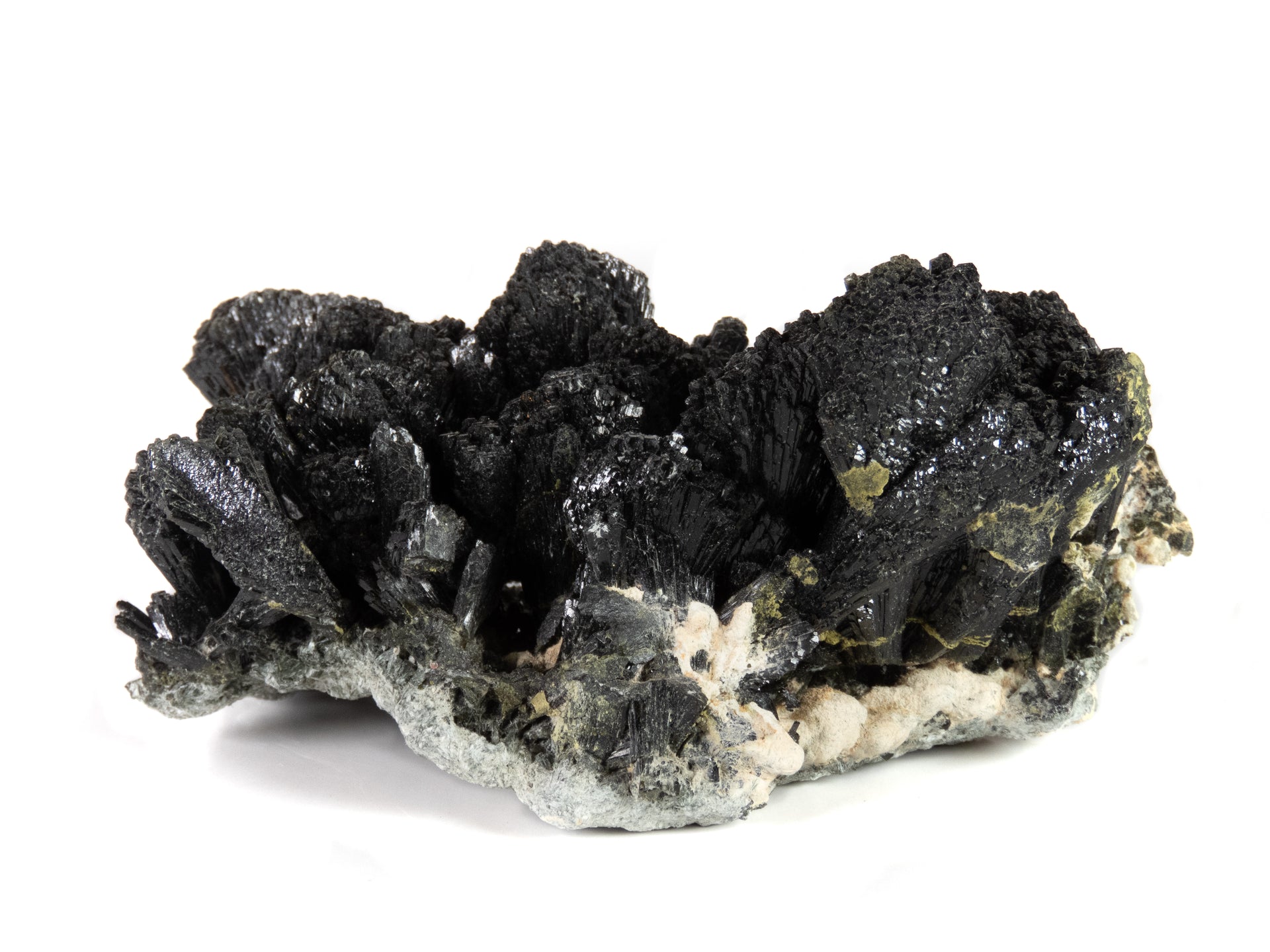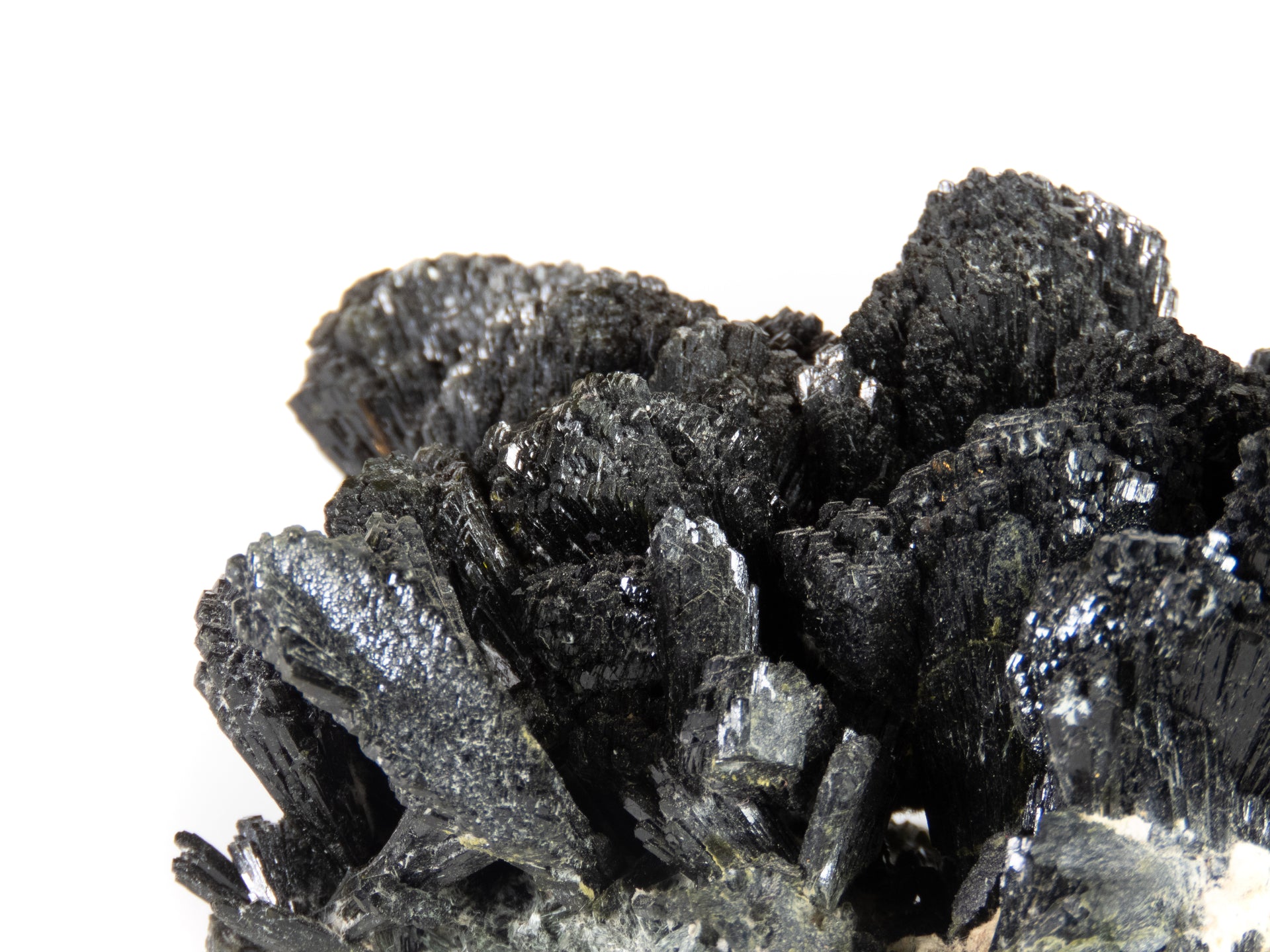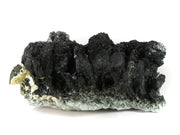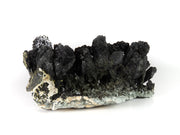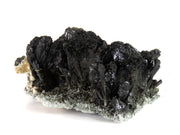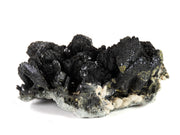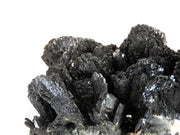EPIDOTE
A large specimen of arboreal Balochistan epidote with rounded, bundled, “wheat sheaf” terminations. Both sides display well, the hue is a deep, deep green hue and the vitreous luster is stront. The crystals all protrude out of a sturdy plate of matrix that makes for an excellent natural base. According to sources in Pakistan, this locale is no longer producing specimens, so who knows how much longer it'll be until we see more epidotes that look like this.
More info:
Epidote mineralization at Zard Koh (Zard Mountain) occurs within alpine-type fissures of metamorphic origin. The crystallization process produced exceptional dark-green prismatic crystals under moderate to high-pressure conditions during regional metamorphism associated with the Himalayan orogeny. The specimens exhibit remarkable crystal development, displaying characteristic monoclinic morphology with sharp terminations and distinctive striations parallel to the b-axis. The mineral formation occurred through hydrothermal alteration of calcium-aluminum silicates under conditions of greenschist to amphibolite facies metamorphism.
